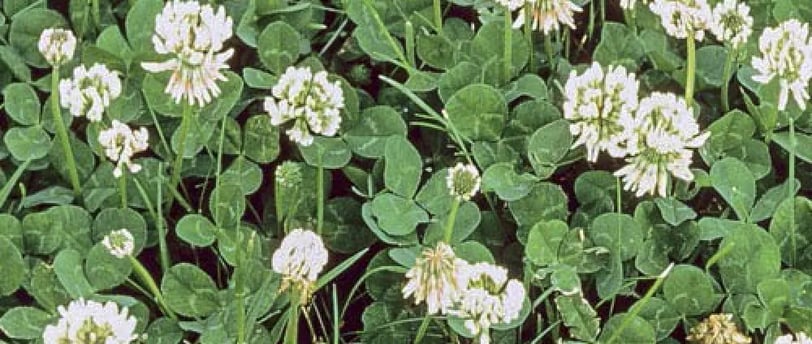Clover: A Versatile Beneficial Plant
Discover the benefits of clover, a versatile legume in the genus Trifolium, known for its trifoliate leaves and beautiful blooms. Learn how this beneficial plant thrives in diverse landscapes and enhances your garden.
5/29/20254 min read


Understanding Clover: Types and Benefits
Clover, a legume in the genus Trifolium, is one of the most versatile and beneficial plants found across various landscapes. It is known for its trifoliate leaves and attractive blooms, which can vary in color from white to purple. There are several popular types of clover available, each with its unique characteristics and advantages, making them valuable additions to home gardens and landscapes.
One of the most common varieties is the red clover (Trifolium pratense). This type is recognized for its vibrant pinkish-purple flowers and ability to thrive in well-drained soils with full sun exposure. Red clover is often used in traditional medicine due to its rich nutritional profile, including vitamins and minerals like calcium and magnesium. It also serves as a natural soil enhancer by fixing nitrogen, which improves fertility for neighboring plants in gardens.
Another notable type is the micro clover (Trifolium repens), a smaller, low-growing version favored for lawn alternatives. Micro clover is particularly advantageous in domestic settings because it requires less mowing and watering compared to traditional grass lawns. It is also drought-resistant and can withstand foot traffic, making it an ideal ground cover that contributes to soil health while offering aesthetic value.
Black clover (Trifolium pratense var. involucratum) represents another admirable choice, commonly found in tropical and subtropical regions. This variety thrives in poor-quality soils and serves as an effective cover crop, reducing erosion and providing protection against weeds. The nitrogen-fixing ability of black clover enhances soil fertility, promoting a healthier ecosystem for surrounding plants.
Each of these clover types offers distinct benefits; they are suitable for various gardening and landscaping needs. Moreover, their diverse applications, from improving soil health to providing nutritional benefits, underscore the importance of incorporating clover into our green spaces.
Where to Find Clover Locally
Locating clover near your region can be an engaging and rewarding endeavor. Community gardens are an excellent starting point, as they often grow a diverse range of plants, including various clover species. Visiting these gardens allows you to not only observe the plants but to also interact with fellow gardening enthusiasts who may have valuable insights on clover cultivation.
Local nurseries and garden centers frequently stock clover, given its popularity among gardeners for both ornamental and ecological purposes. When visiting these establishments, it is advisable to inquire about the specific clover varieties they carry. Additionally, staff members may be knowledgeable and can offer tips on the best clover species suited for your particular soil conditions and climate.
Specialty shops that focus on seeds or native plants can also be a great resource. These stores often prioritize local biodiversity and may offer unique clover types that are well-adapted to your region. Remember to check the packaging for information on the growth habits and uses of the clover varieties you are interested in.
In addition to physical locations, leveraging online platforms can significantly enhance your search for clover. Gardening forums, social media groups, and community pages create avenues for sharing firsthand experiences and recommendations. By engaging with local gardening communities online, you can gather tips on where to locate clover and even connect with individuals willing to share or swap seeds.
Utilizing a combination of these methods will maximize your chances of finding clover suitable for your garden. As you explore your community, you may discover exciting opportunities for learning and networking with others who share your passion for gardening and clover cultivation.
Caring for Your Clover: Growth and Maintenance Tips
Clover, a resilient and adaptable plant, can thrive in various conditions with appropriate care. Essential factors such as soil preparation, watering needs, sunlight requirements, and pest management strategies play significant roles in ensuring healthy growth. First and foremost, it is important to start with well-drained soil that has a slightly acidic to neutral pH range of 6.0 to 7.0. Amending the soil with organic matter, such as compost, can enhance fertility and structure, supporting robust clover development.
When it comes to watering, clover generally requires moderate moisture. It is advisable to water deeply but infrequently, allowing the top inch of soil to dry out between waterings. This practice helps establish a strong root system and prevents over-saturation, which can lead to root rot. During dry spells, monitoring moisture levels is crucial to ensure the plants do not become stressed.
Clover thrives best in full sun, receiving at least 6 to 8 hours of sunlight daily. If planting in shadier areas, consider adjusting the location to maximize exposure, as insufficient light can hinder growth and reduce flower production. Once established, clover plants are quite hardy and can tolerate light drought conditions.
Pest management is another vital consideration for maintaining a healthy clover patch. Regularly inspecting plants for signs of pests such as aphids or beetles can help identify issues early. Utilizing insecticidal soap or organic pest control methods can mitigate infestations without harming beneficial insects. Furthermore, clover naturally attracts pollinators, enhancing biodiversity in your garden.
Incorporating these care tips will not only promote the health of your clover but can also enable you to expand your patches sustainably, contributing to the overall ecosystem of your garden.
Using Clover Creatively in Your Garden and Home
Clover, often regarded as a mere weed by some, offers a plethora of creative applications in both gardening and culinary practices. As a versatile plant, it can be seamlessly integrated into garden designs, providing aesthetic appeal and functionality. One of the most prominent uses of clover in landscaping is its capability as ground cover. Its lush green foliage not only adds a vibrant touch to any landscape but also helps prevent soil erosion and suppresses weed growth. When planted in patches or spreads, clover creates a beautiful, dense mat that requires minimal maintenance while promoting a healthy ecosystem in your garden.
In addition to its visual and practical benefits in gardening, clover boasts culinary advantages that make it an interesting addition to your kitchen. With its mild, slightly sweet flavor, clover leaves can be utilized in various recipes. Fresh clover leaves can be added to salads, smoothies, or stir-fries to enhance nutritional value while introducing an intriguing flavor component. Its delicate white or pink flowers can also be harvested to create herbal teas or used as garnishes, providing not only taste but also visual appeal.
Moreover, clover is rich in nutrients, making it a popular choice in wellness circles. The leaves contain essential vitamins and minerals, leading some to experiment with clover-infused oils or skin treatments. For those interested in natural remedies, dried clover can be used in tinctures or poultices to leverage its health benefits. The incorporation of clover into your garden and home can yield multi-faceted advantages, reinforcing its reputation as more than just a weed. By exploring these creative applications, you invite the possibility of incorporating this unassuming plant into your daily life in delightful and healthful ways.
